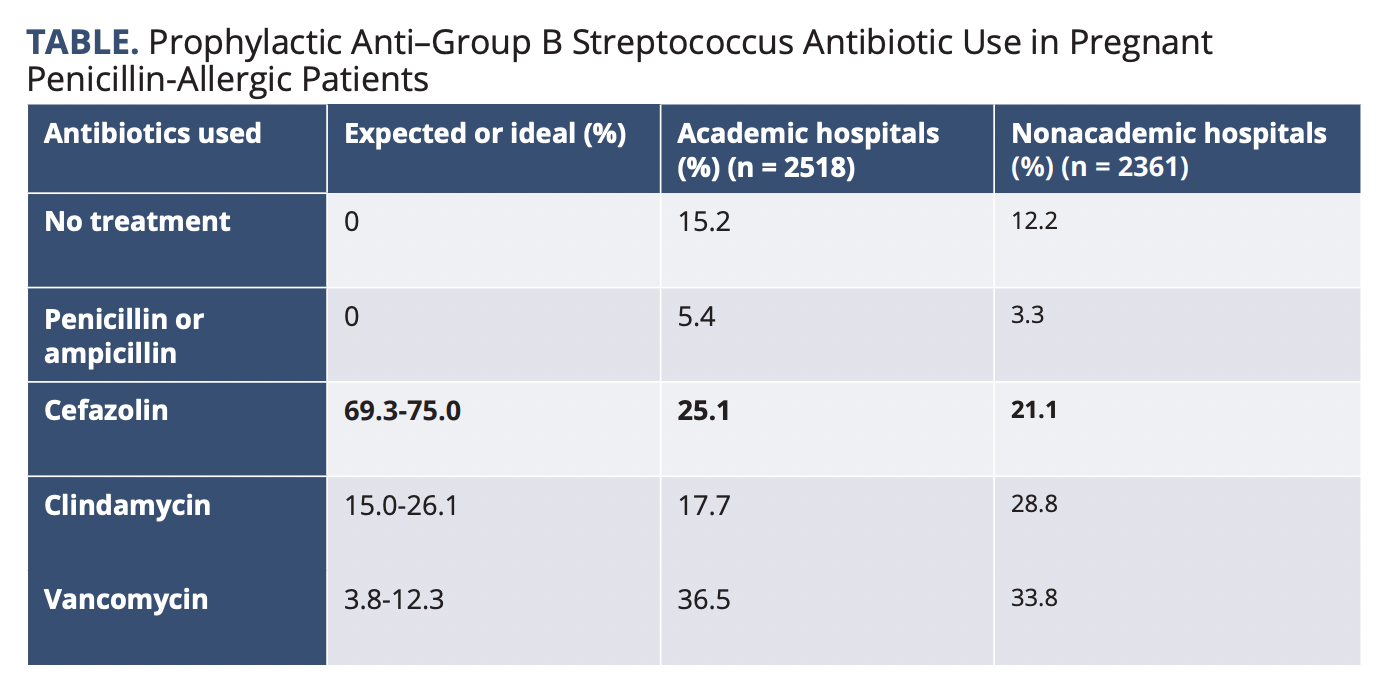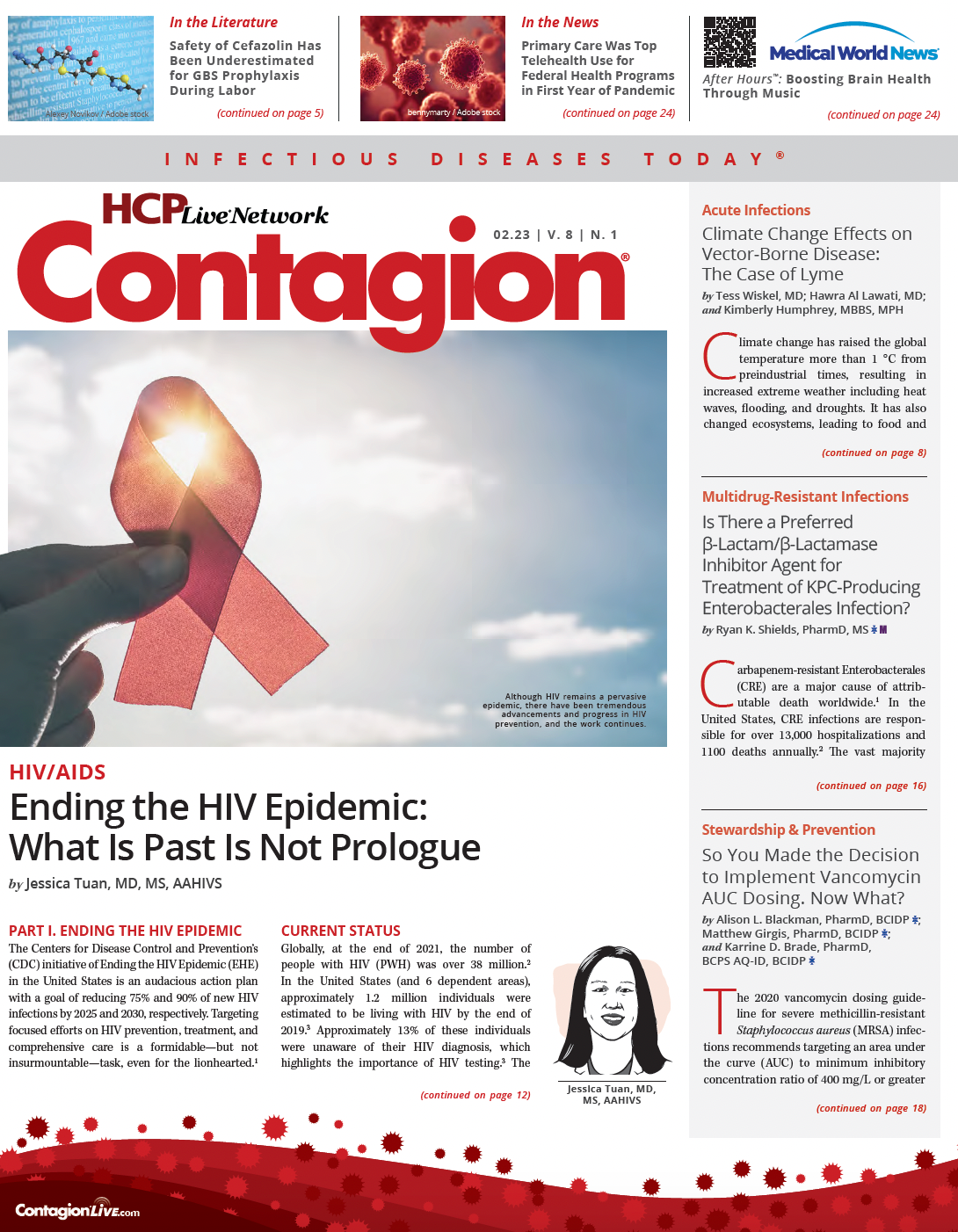Safety of Cefazolin Has Been Underestimated for GBS Prophylaxis During Labor
Both undertreatment and overtreatment were common in this cohort of penicillin-allergic pregnant women with Group B Streptococcus (GBS).
Group B Streptococcus (GBS) is a catalase-negative, gram-positive coccus that can cause many types of infections in humans. GBS is the most common cause of bacteremia, sepsis, pneumonia, and meningitis in newborns, with a 4% to 6% mortality rate.
According to the Centers for Disease Control and Prevention (CDC), newborns are at higher risk for GBS infection if the mother carries the bacteria late in pregnancy. Thus, if pregnant women test positive on GBS screening, they receive intravenous (IV) antibiotics while giving birth to prevent vertical transmission of GBS to their newborn.
The American Society for Microbiology provides antimicrobial prophylaxis against GBS based on the pregnant woman’s allergic diagnosis or history.1 Penicillin is recommended in patients with no penicillin allergy. For patients with penicillin allergies without a history of severe IgE-mediated hypersensitivity reactions, cefazolin is recommended instead of penicillin.
For patients with a history of severe IgE-mediated hypersensitivity reactions, susceptibility testing of the GBS should guide prophylaxis. If susceptible, clindamycin would be appropriate intrapartum prophylaxis; otherwise, vancomycin should be administered. If susceptibility results are not available, vancomycin could be used. Even with the existence of these guidelines, inappropriate prophylaxis has been reported.
Pineles et al completed a retrospective observational cohort study to investigate national patterns of antibiotic use for GBS prophylaxis in patients with a penicillin allergy between academic and nonacademic centers. Furthermore, they also investigated appropriateness and adherence to current guidelines in patients with penicillin allergies. The inclusion criteria for the study population were women aged between 15 and 45 years, with a diagnosis of GBS infection/colonization and penicillin allergy, who gave birth vaginally between the late second trimester and full term (24-42 weeks of gestation). Any antibiotic use for indications other than GBS prophylaxis was excluded.
The researchers calculated the ideal rate of each antibiotic used based on literature estimates for patients with self-reported severe IgE-mediated hypersensitivity reactions to penicillin and compared how each hospital type actually administered antibiotics for GBS prophylaxis (Table).

The authors estimated that in patients with a penicillin allergy, expected cefazolin use would be in 69.3% to 75.0% of patients, clindamycin use in 15.0% to 26.1%, and vancomycin use in 3.8% to 12.3%. However, those numbers are significantly different from actual use. In general, cefazolin use was remarkably lower than expected in both academic and nonacademic hospitals.
Clindamycin use fell into the range of the expected in academic hospitals, but it was slightly overused in nonacademic hospitals. It is also notable that actual vancomycin use in both academic and nonacademic hospitals was 3 times higher than the upper limit of expected use. Moreover, although guidelines recommend that all pregnant women with GBS receive antibiotic prophylaxis during labor, 12.2% of patients in nonacademic hospitals and 15.2% of patients in academic hospitals were not treated with any antibiotics.
These data demonstrate that there is room for improvement in providing prophylaxis for penicillin-allergic pregnant women with GBS. Both undertreatment—prophylaxis that should have been administered but was not— and overtreatment—use of broad agents such as vancomycin—were common.
References
1. Filkins L, Hauser JR, Robinson-Dunn B, Tibbetts R, Boyanton BL, Revell P. American Society for Microbiology provides 2020 guidelines for detection and identification of group B Streptococcus. J Clin Microbiol. 2020;59(1):e01230-20. doi:10.1128/JCM.01230-20

